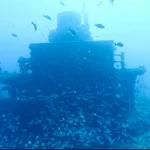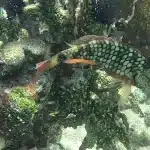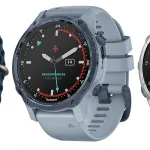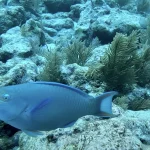Why Key West is the Ultimate August Dive Destination
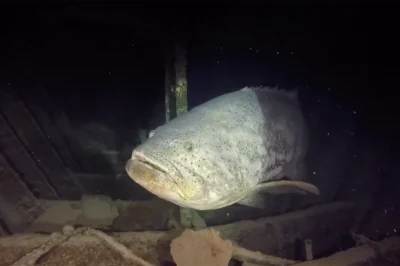
Table of Contents
- Why Key West is the Ultimate August Dive Destination
- Mastering the Goliath Grouper Encounter
- Myths About Diving with Goliath Groupers Debunked
- From Mistake to Mastery: Lessons from Common Diving Errors
- August Dive Trends in Key West
- Comparing Dive Sites: Where to Encounter Goliath Groupers
- How Data-Driven Diving Enhances Your Experience
- Preparing for Your Dive: Equipment Essentials and Tips
Introduction
Diving in Key West during August offers a remarkable opportunity to encounter the mighty Goliath Grouper. This guide provides invaluable insights into best practices, debunking myths, and learning about trends to equip you for an unforgettable dive. Ready to find out why August is unmissable for diving in Key West? Read on!
Why Key West is the Ultimate August Dive Destination
Seasonal Timing and Lunar Cycles
August aligns with the spawning season for Goliath groupers, optimal for witnessing these majestic fish. Although September marks peak sightings, August offers significant opportunities. Diving around new moon phases enhances chances of encountering groupers as they gather to spawn.
Targeted Dive Locations
Divers should focus on areas with natural and artificial structures to spot Goliath groupers. Key sites in Key West include:
- Wrecks: Famous sites like the Dredger wreck and other reefs offer great exploration opportunities.
- Natural Reefs: Look for rocky formations and coral structures providing shelter for groupers.
Groupers prefer depths of 16 to 160 feet, congregating during their spawning rituals.
Diving Techniques
- Approach Calmly: Goliath groupers are wary. Maintain a slow pace to avoid startling them.
- Use Dive Lights: Enhance visibility in dark areas without disturbing their behaviour.
- Baitfish Coordination: Observe interactions from a distance during peak spawning events for a unique spectacle.
Logistics Considerations
Partner with local guided charters familiar with aggregation sites and lunar cycles affecting group behaviour. August falls during hurricane season, so book refundable travel arrangements and stay informed on weather forecasts.
Mastering the Goliath Grouper Encounter
Diving with Goliath Groupers often involves misconceptions. Addressing these myths enriches understanding and ensures safety, while highlighting the ecological significance of these creatures.
Myth: Goliath Groupers Overpopulate Reefs and Deplete Fisheries
Despite beliefs, these groupers play an ecological role in controlling juvenile lobsters and managing predator populations. They aid in reducing invasive species, positively impacting marine biodiversity.
Myth: Goliath Groupers Are Aggressive Towards Divers
While some believe they are aggressive, most encounters are peaceful. Aggression is rare and generally occurs when provoked. Divers report exhilarating experiences as these fish display curiosity, not hostility.
Myth: Goliath Groupers Are Pests or Invade Reef Ecosystems
Their appearance in certain areas is due to spawning aggregations. Conservation efforts have led to their recovery, benefiting marine ecosystems and ecotourism.
Myth: Goliath Groupers Are Mindlessly Aggressive
These fish exhibit protective behaviours, communicating through postures or sounds rather than aggression. Respectful distance ensures safe interactions.
Key Considerations for Divers
- Spawning Aggregations: August to October, mainly in Jupiter, Florida, offers peak viewing.
- Ecological Role: Vital for maintaining reef health and resilience.
- Conservation Status: Protected under U.S. regulations, with fishing prohibited to sustain ecological balance.
Understanding these factors allows divers to appreciate their role in ecosystems.
Myths About Diving with Goliath Groupers Debunked
Divers seeking Goliath Groupers can make mistakes that impact safety and the success of interactions. Here are common errors and solutions:
1. Underestimating Environmental Challenges
Error: Diving without proper training or gear.
Correction:
- Complete relevant certifications and carry essential gear.
2. Poor Navigation in Wreck Sites
Error: Drifting off-course in complex layouts.
Correction:
- Use a mucker stick and dive “slightly heavy” to anchor near wrecks.
3. Disrupting Grouper Behaviour
Error: Approaching too closely.
Correction:
- Maintain a safe distance, especially during mating seasons.
4. Ignoring Dive Dynamics
Error: Not adjusting air consumption for currents.
Correction:
- Plan conservative dive profiles and monitor air supply closely.
Following these guidelines enhances safety and encounter quality.
From Mistake to Mastery: Lessons from Common Diving Errors
August diving in Key West is ideal for its peak water temperatures, spiny lobster access, and active marine life. Key trends include:
Temperature and Visibility
Water temperatures peak at 86°F (30°C), with good visibility supporting views of reefs and marine life.
Lobster Season
August marks the start of the spiny lobster season, heightening interest among divers keen on spotting and harvesting.
Weather Conditions
Prepare for high temperatures and frequent thunderstorms, with mild ocean breezes impacting conditions.
Marine Life Encounters
Anticipate encounters with large species such as stingrays and sharks around reefs and wrecks.
Align with dive operators familiar with lobster hotspots for optimal experiences.
August Dive Trends in Key West
Diving for Goliath Groupers requires knowledge of specific sites in Key West. Key recommendations include:
Recommended Dive Sites
- Alligator Deep: 60–95 feet, overhangs housing 400–600+ lb groupers.
- Blue Parrot: 30–50 feet, drift-diving hotspot.
- The Bluff: 40–60 feet, frequented by diverse marine life.
General Habitat Preferences
- Reefs: Natural/artificial reefs with rocky substrates attract groupers.
- Depth Range: 16–160 feet, favouring shallower reefs near food sources.
August Diving Considerations
Though data for August is limited, warm waters and clear visibility are optimal for spotting Goliath Groupers, particularly larger ones.
Note that while Goliath Groupers are formidable, they are not aggressive and contribute positively to reef ecosystems.
Comparing Dive Sites: Where to Encounter Goliath Groupers
Data-Driven Diving Enhancements in Key West
Data-driven diving enriches the Key West experience, enhancing safety and engagement for divers.
1. Precision in Marine Life Encounters
Advanced dive planning software uses real-time data to predict marine activity, optimizing encounters and enhancing dive experiences.
2. Real-Time Environmental Monitoring
Underwater sensors allow dive operators to monitor current conditions, enabling dynamic location selection for optimal safety and clarity.
3. Conservation Participation through Citizen Science
PADI-certified centres involve divers in data collection, promoting conservation and ecological stewardship.
4. Structured Dive Itineraries
Analytics-based itineraries ensure exposure to rich biodiversity while minimising downtime.
These strategies promote ecological preservation and enhance the diving experience in Key West.
How Data-Driven Diving Enhances Your Experience
Preparing for a Key West dive necessitates the right equipment and diving techniques, especially for encountering Goliath Groupers. Key considerations include:
Essential Diving Gear for Goliath Grouper Encounters
- Dive Computer: Monitor depths safely.
- Dive Light: Enhances visibility in dim environments.
- Wetsuit: Provides thermal protection.
- Venting Tools: Ensure safe release of caught fish.
- Reel or Safety Line: Maintains position in currents.
Interaction Tips
- Maintain Distance: Avoid sudden movements.
- Avoid Grasping: Prevents injuries.
- Quick Photography: Avoid long exposures.
- Stay Calm: Respect their space.
Regulatory Compliance
- No Harvest: Harvesting is prohibited; immediate release is essential if caught.
- Permit Requirements: Permits apply where harvesting is exceptionally allowed.
- Proper Handling: Keep fish submerged during handling.
- Spawning Periods: August is a peak month, requiring respect for their breeding cycle.
Environmental & Safety Precautions
- Dive Buddy System: Vital for safety.
- Signal Devices: Alert surface traffic during emergencies.
- Weather Awareness: Monitor conditions due to variable August weather.
Preparing for Your Dive: Equipment Essentials and Tips
Diving Conditions in Key West during August
August provides warm surface water temperatures, suited for extended dives. Visibility varies with weather conditions, influencing possible encounters.
Goliath Grouper Encounters
Commonly seen in protected ledges, these groupers are encountered during summer, with August offering ideal spotting opportunities. They are protected under Florida law, necessitating a hands-off approach.
Key Considerations for Planning Your Dive
- Marine Life: Increased summer encounters with diverse species.
- Dive Planning: Choose sites with stable visibility and experienced operators for optimal grouper sightings.
- Equipment Check: Ensure it suits both temperature and depth needs.
Sources
- Key West Scuba Diving – Goliath Grouper Information
- ScubaBoard – Goliath Grouper Diving in August or September
- DiverNet – Dive the Goliath Grouper Hotspots
- Grouper Luna – 5 Goliath Grouper Myths
- Jupiter Scuba Diving – Diving with the Goliath
- ScubaBoard – Goliath Grouper Encounters
- Xray Magazine – Goliath Groupers
- Divers Direct – The Atlantic Goliath Grouper

